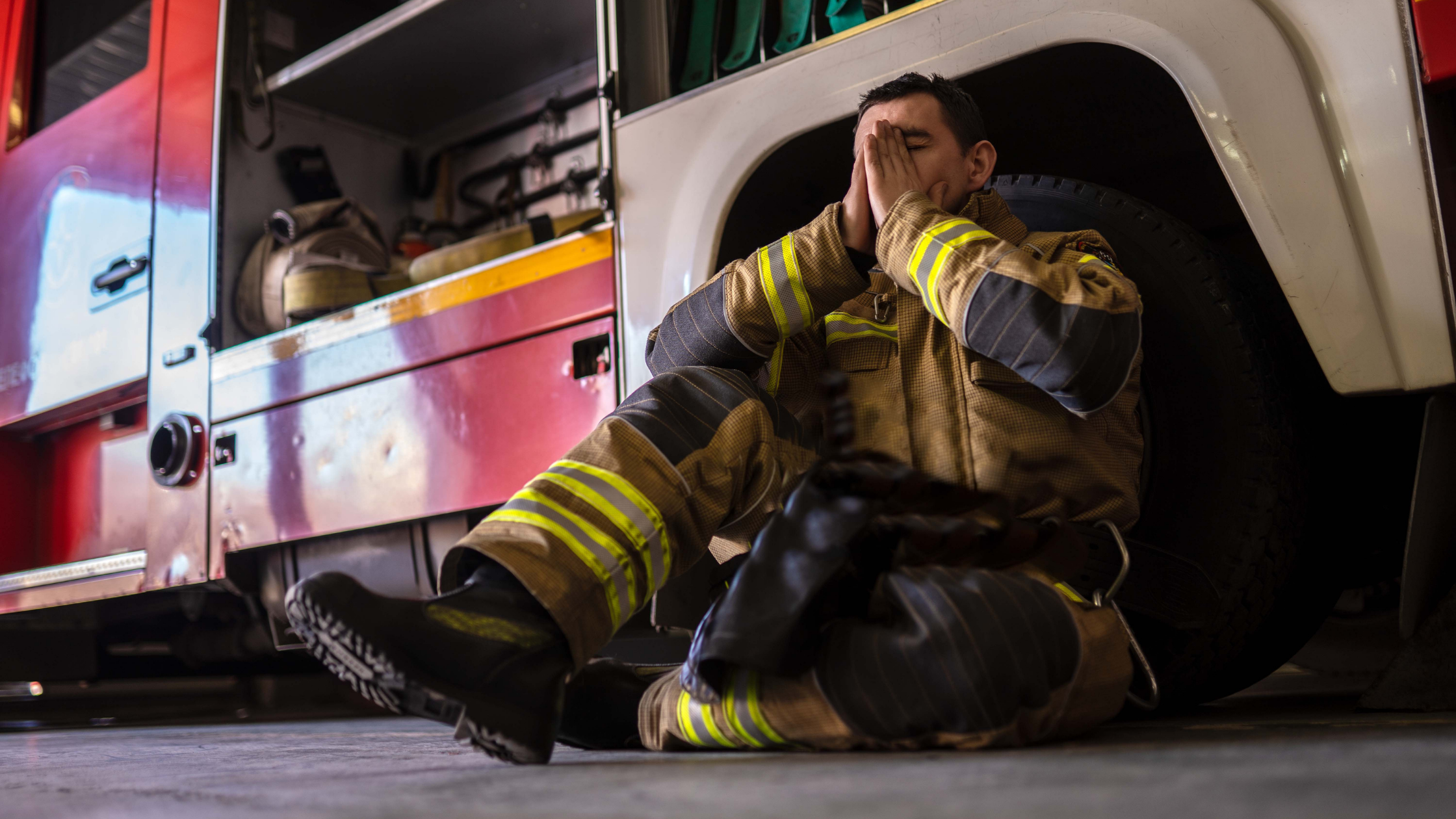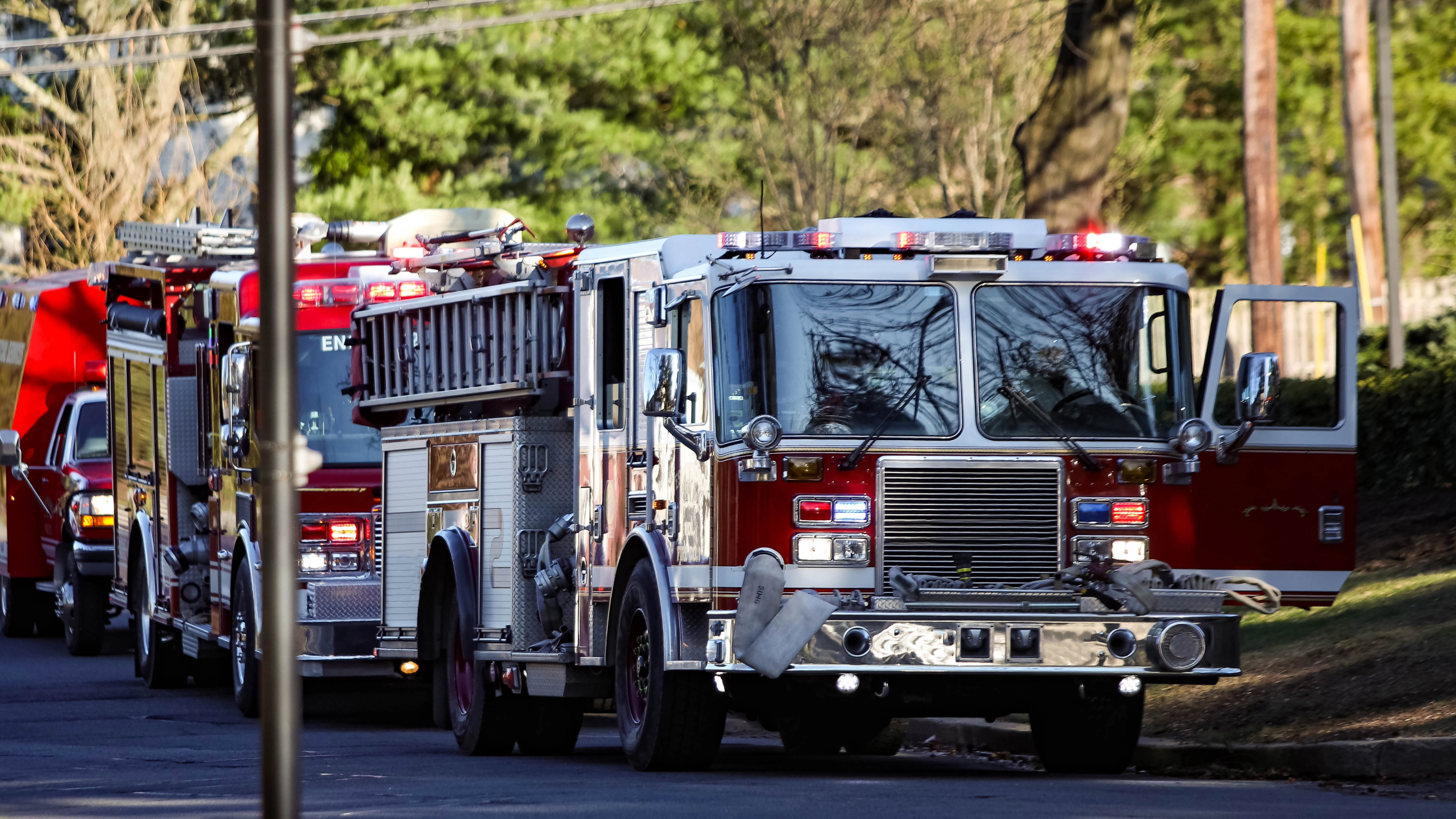Your battle is my battle. Together we can help prevent suicide.
There were 47,500 suicide fatalities in the U.S. in 2019 and an estimated 1.4 million suicide attempts according to the CDC. That’s an average of 130 suicides per day.
This means it’s likely that you’ve worked in a situation involving suicide as a paramedic, firefighter, dispatcher or rescuer. But it also means it’s possible that you’ve experienced suicide, suicide attempts or suicidal thoughts on a personal-level as a friend, family member, fellow responder or even yourself.
UNDERSTANDING THE RISKS
While the risks of suicide are complex and there is no single cause—the American Foundation for Suicide Prevention (AFSP) states that suicide occurs most often when stressors and health issues create an experience of hopelessness and despair.
Some of the of the issues and conditions that the ASFP considers to be risk factors include:
- Mental health conditions (like depression and substance use problems)
- Serious physical health conditions (including pain)
- Traumatic brain injuries
- Prolonged stress or stressful life events
- Exposure to another person’s suicide
- Previous suicide attempts
- Family history of suicide
- Childhood abuse, neglect or trauma
- Access to lethal means (firearms accounted for 50.39% of all suicide deaths in 2019)
The AFSP also notes that the rate of suicide is highest in middle-aged white men and in 2019 men died by suicide 3.63x as often as women and white males accounted for 69.38% of suicide deaths.
YOUR BROTHERS AND SISTERS MAY BE STRUGGLING
If some of those risk factors and circumstances hit home—you’re not alone. You’re constantly called to scenes full of trauma, put in inherently dangerous situations and faced with stressful scenarios—and it comes at a cost.
According to the CDC, firefighters are more likely to die by suicide than in the line of duty, EMS providers are 1.39x more likely to die by suicide than the public and studies have found that about a fourth of public safety telecommunicators have symptoms of post-traumatic stress disorder and depression. And while that should be concerning enough to inspire action—it’s important to note that these incidents are likely severely underreported.
THE SIGNS TO LOOK FOR
Most people who are considering suicide show signs through what they say or what they do. Here are the changes in behavior or new behaviors that the AFSP says to look for:
- Verbalizing thoughts of suicide, hopelessness, being a burden, feeling trapped, having no reason to live or unbearable pain.
- Behaving differently including increased drug or alcohol use, withdrawing or isolating from family and friends, giving away their prized possessions, searching or looking for methods to end their lives and saying goodbye to people.
- Experiencing moods like depression, fatigue, constant sleeping, loss of interest, anger and shame—or sudden relief or improvement to those moods.
HOW TO HELP PREVENT SUICIDE—TOGETHER
There are protective measures and strategies that can help prevent suicide says the AFSP, including:
Being proactive about mental health
If you haven’t already, it’s time to make mental health a priority in your organization. One way to do this is through developing a comprehensive behavioral health program. This can include a peer support program, which, according to the International Association of Fire Fighters (IAFF), have been demonstrated to be an effective method of providing support to groups. After all, no one knows what you’re truly up against as a responder more than your brothers and sisters.
For more information on how you can develop an impactful behavioral health program, please download our free Behavioral Health Concerns booklet available at vfis.com which covers top behavioral health concerns for emergency responders, how to develop a peer support program and more.
Feeling connected and supported
Beyond creating an active peer support group that remains a constant priority, you can help create connection among your team by simply spending time together, hosting team building activities, getting involved in your community to build a strong sense of purpose and finding ways to cultivate deeper,
trusting relationships.
Creating a culture that encourages seeking help, connection and a sense of purpose
You can create a behavioral health program, develop a peer support group and host events to help your team connect. But, if mental health concerns are still seen as a “part of the job” or perceived as “weak” or making someone “unfit for the job”—your efforts will fall flat and the consequences could be grim.
There needs to be a top-down, bottom-up understanding that suicide and mental health concerns are very real, very serious and very common. Create a culture that emphasizes open communication, prioritizes mental health and works each day to show every member of your team that they are valued and not alone.
If you think someone may be considering suicide—do something
The AFSP says that if you’re worried about someone, always assume that you’re the only person who will act and start a private conversation with them. Ask them directly if they’re thinking about suicide, let them know you’re open to talking about mental health, tell them you care about them, encourage them to talk seek treatment, listen to them and follow up.
COPING WITH SUICIDE GRIEF
Whether it’s for a patient, fellow responder or yourself—understanding coping strategies for suicide is one of those things you can keep in your toolbox but hope you never use. Mayo Clinic states that someone’s suicide can trigger very intense emotions including shock, anger, guilt, despair, confusion and feelings of rejection. Some of the difficulties of dealing with this type of grief include people not reaching out for help (or to just talk) because of the potential stigma or religious implications of suicide or simply because they don’t know how to cope with this type of loss.
Here are some of the coping tools that Mayo Clinic recommends:
- Surround yourself with people who are willing to talk when you need to or simply sit with you when you’d
rather be silent. - Remember there is no “right” way to grieve—do what works for you.
- Don’t chance being alone on holidays, anniversaries or other days that may be triggering.
- Don’t rush yourself and expect setbacks—healing doesn’t happen overnight.
- Consider a support group that’s specifically for those affected by suicide.
REMEMBER: HELP IS ALWAYS A PHONE CALL AWAY
Whether you’re experiencing suicidal thoughts, coping with suicide grief or suspect someone else is thinking about suicide—always know when it’s time to seek professional help and encourage others to do the same.
If you’re looking for a professional who understands your needs as an emergency responder, check out the Directory of Behavioral Health Professionals from the National Volunteer Fire Council (NVFC) as a part of the their Share the Load Program. This list, which was developed in combination with the Firefighter Behavioral Health Alliance and American Psychological Association, provides a state-based directory of behavioral health professionals that are equipped and ready to help firefighters, EMS providers, dispatchers and rescue workers and is available to download here: nvfc.org/phfd.
One of the best numbers to keep on hand that can help any American (regardless of location, time of day, occupation, etc.), is the National Suicide Prevention Lifeline at 1.800.273.8255. This is a national network of local crisis centers available 24/7 that provide free and confidential emotional support to people in suicidal crisis or emotional distress. And soon you’ll only need to remember three numbers, because “9-8-8” is expected to be available nationwide as of mid-2022. This will be the new, easy-to-remember 3-digit phone number for Americans in crisis that will connect you directly with suicide prevention and mental health crisis counselors.
Lastly, remember there’s always hope for the future (new coping mechanisms are being researched every day) and know that you are important, valuable and not alone. If you’re struggling, please hold on and reach out for help.
DISCLAIMER
The information contained in this blog post is intended for educational purposes only and is not intended to replace expert advice in connection with the topics presented. Glatfelter specifically disclaims any liability for any act or omission by any person or entity in connection with the preparation, use or implementation of plans, principles, concepts or information contained in this publication.
Glatfelter does not make any representation or warranty, expressed or implied, with respect to the results obtained by the use, adherence or implementation of the material contained in this publication. The implementation of the plans, principles, concepts or materials contained in this publication is not a guarantee that you will achieve a certain desired result. It is strongly recommended that you consult with a professional advisor, architect or other expert prior to the implementation of plans, principles, concepts or materials contained in this publication.
This blog post may contain the content of third parties and links to third party websites. Third party content and websites are owned and operated by an independent party over which Glatfelter has no control. Glatfelter makes no representation, warranty, or guarantee as to the accuracy, completeness, timeliness or reliability of any third party content. References to third party services, processes, products, or other information does not constitute or imply any endorsement, sponsorship or recommendation by Glatfelter, unless expressly stated otherwise.
Related posts
We asked 10 members of our VFIS Team to name one auto-related risk that they believe is underdiscussed in fire and EMS agencies. Here’s what they said.
Most volunteer fire departments rely heavily on POVs, but there are inherent risks you should know.
Establish a Emergency Vehicle Operations Program that includes driver/operator requirements to help ensure your vehicles are in the right hands.










Submit a Comment